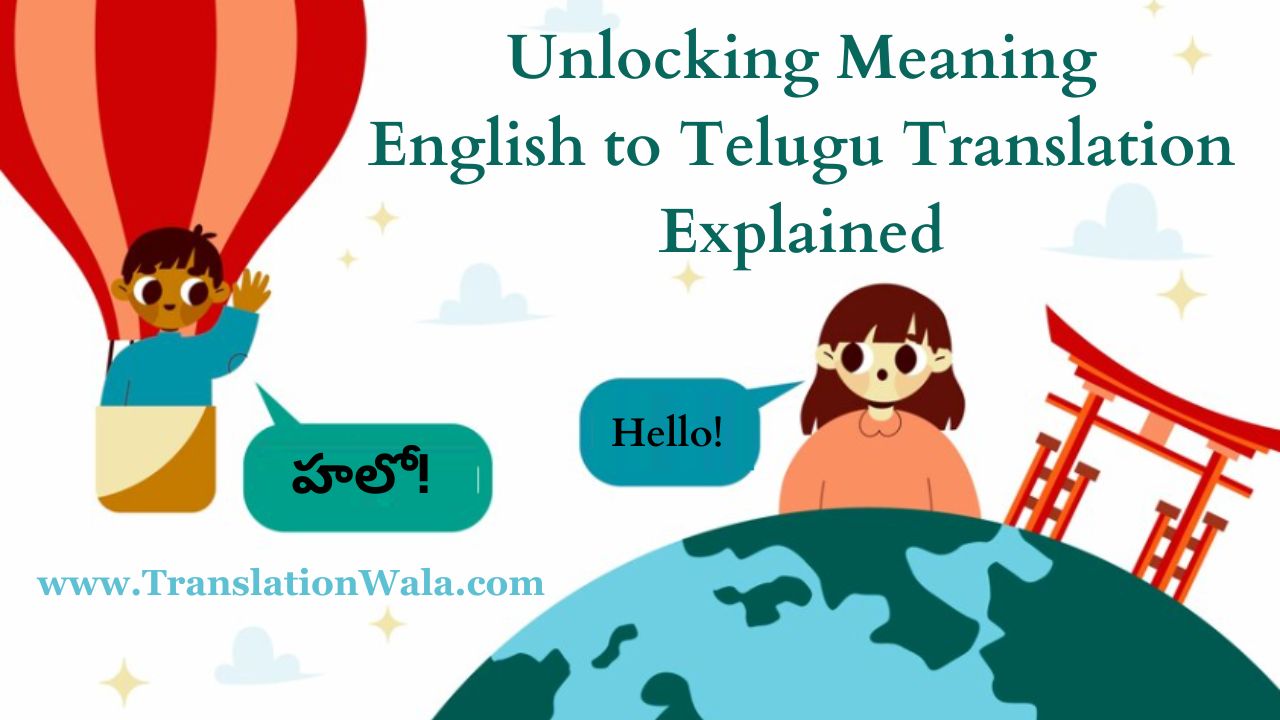India has 22 official languages, and each one has its own sound and way of saying things. Over 75 million people speak Telugu, which makes it an important part of this rich fabric. But getting from English to Telugu can be hard because the paths are so complicated, especially when you need to translate subtleties of meaning. This blog is meant to help you learn how to English to Telugu Translation correctly.
Understanding the Cultural Bridge
Translation is more than just replacing words with each other. It requires a deep knowledge of both languages and the cultures that they represent. English is spoken all over the world, so it often has Western effects. Telugu, on the other hand, comes from Indian practices and ideals. If you don’t pay attention to these societal differences, you might translate something wrong and miss the point.
Something like “good morning” in English might be written exactly as “nallanu cheppandi” in Telugu. Even though it is right grammar, it doesn’t have the same warmth and friendliness as the original welcome. The word “namaskaram” or “subhakamunnatho” might be more fitting for this situation, based on the speaker and listener’s connection.
Beyond the Literal: Embracing Figurative Language
Figurative language, such as metaphors and similes, is used a lot to paint vivid pictures and stir up feelings. Literally translating these phrases can take away from their power and beauty. When this happens, it’s very important to know what the symbolic language is meant to mean and to find culturally appropriate words in Telugu.
Translation of the English phrase “raining cats and dogs” into Telugu as “pidugu meeda kukkalu vuyyisthunnay” would not make sense to people who understand Telugu. “Mandhu meeda pillalu vuyyistunnaaru,” which means “children are playing in the rain,” might be a better choice because it lets you know how bad the rain is.
Also Read: Bridge the Language Gap: Expert English to Kannada Translation

Treading the Tightrope: Balancing Formality and Context
In both English and Telugu, official and informal forms are important for conversation. Misunderstandings can happen when you translate without thinking about the audience and the situation. A business document translated in a casual tone could come across as rude, while words meant for older people should be written in a more respectful tone in Telugu.
Finding the right amount of politeness is important for making sure that things are clear and that people respect you. In an informal setting, “how are you?” could be translated as “emandi?” and in a serious setting, it could be translated as “meeru emi vidhamga unnaru?”
Nuancing the Nuances: Addressing Grammatical Differences
English and Telugu have different ways of putting together sentences. When translating from English to Telugu, going word-for-word can often make words sound odd or wrong. To make versions that sound normal, you need to pay close attention to word conjugations, sentence structure, and the use of articles.
Literally, “I gave the book to her” would be “naanu pustakam manaki icchaanu.” What would sound more normal in Telugu, though, is “naanu pustakam manaki icchaa.” That gets rid of the need to repeat the word “manaki.”
Embracing the Journey: Tools and Resources
To translate well, you need to put in the time and effort. There are a lot of tools and services out there that can help you on your journey. Online dictionaries, tools for translating, and language groups can all be very helpful. Always keep in mind, though, that technology is just a tool and not an alternative for human knowledge. It is always best to talk to professional translators about projects that are hard to understand or have a lot of details.
You can English to Telugu Translation more effectively if you know how to use figurative language, formal language, and different types of grammar. Keep in mind that translation is a method, not an end. Take on the tasks, look into the tools, and most of all, enjoy how beautiful and powerful both languages are!



